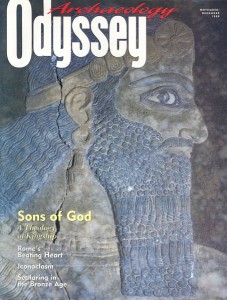“The Godhead Which Cannot Be Represented”: Christian Iconoclasm
Sidebar to: The Image Destroyers
In contrast to Jewish and Muslims iconoclasts, Christians seldom objected to images of animals or everyday people. Instead, they focused their wrath on depictions of sacred figures like Christ, the saints and the Virgin Mary. The Nicene Councils of the fourth century A.D. established the Christian orthodoxy that Christ, the man, and God, the father, were “of one essence.” In the eighth and ninth centuries A.D., Christian iconoclasts in the Byzantine Empire conducted a vigorous campaign against sacred icons, in the belief that pictorial representations of Jesus unduly emphasized his human nature. Their position was first formally stated by the Council of Iconoclasts, convened in Hieria, near Constantinople, in 754 A.D.:
“It is the unanimous doctrine of all the holy Fathers and of the six Ecumenical Synods, that no one may imagine any kind of separation or mingling in opposition to the unsearchable, unspeakable, and incomprehensible union of the natures [of God and Christ] in one hypostasis or person.
“What avails, then, the folly of the painter, who from sinful love of gain depicts that which should not be depicted—that is, with his polluted hands he tries to fashion that which should only be believed in the heart and confessed with the mouth? He makes an image and calls it Christ. The name Christ signifies God and Man. Consequently, it is an image of God and man, and consequently he has in his foolish mind, in his representation of the created flesh, depicted the Godhead which cannot be represented, and thus mingled what should not be mingled He is guilty of a double blasphemy—the one in making an image of the Godhead, and the other by mingling the Godhead and manhood. Those fall into the same blasphemy who venerate the image, and the same woe rests upon them both
Already a library member? Log in here.
Institution user? Log in with your IP address.

